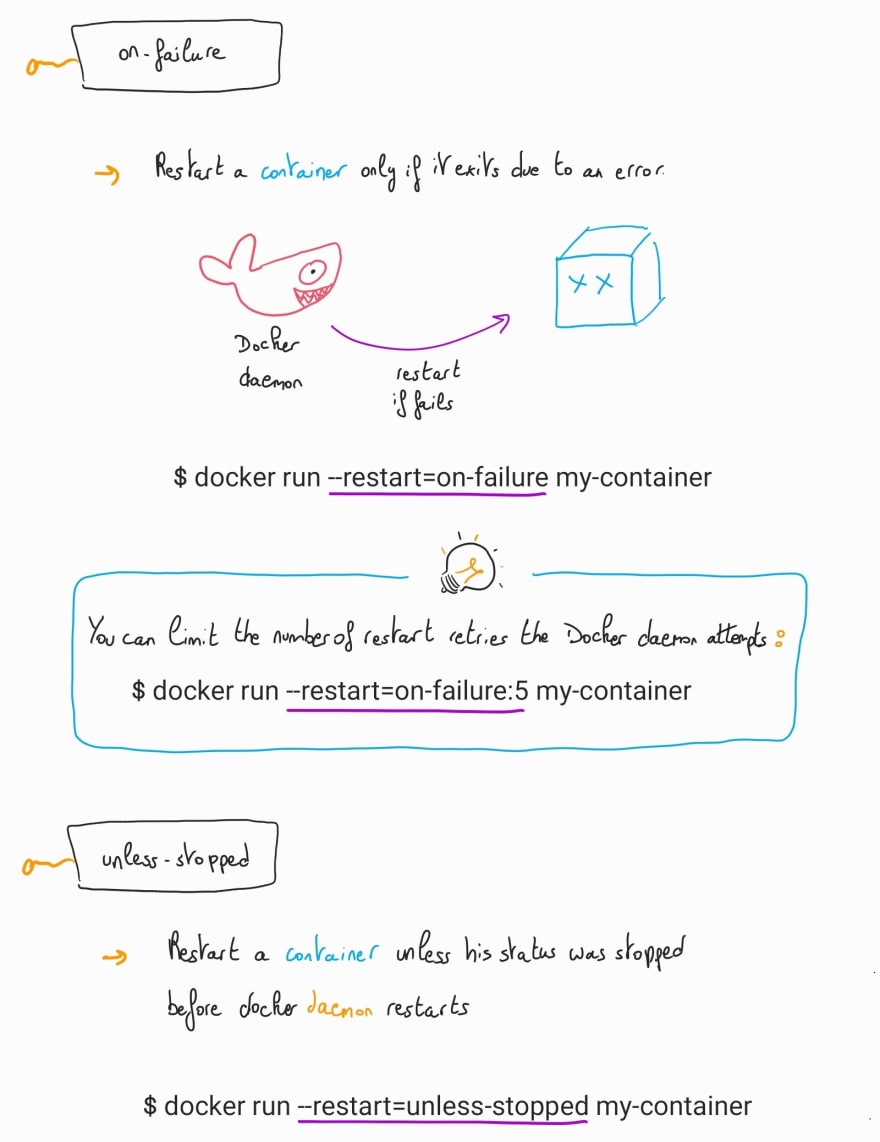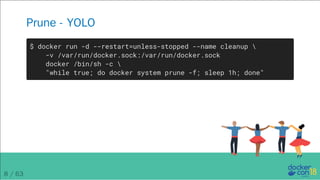
- #DOCKER RUN IMAGE RESTART HOW TO#
- #DOCKER RUN IMAGE RESTART FULL#
- #DOCKER RUN IMAGE RESTART PASSWORD#
#DOCKER RUN IMAGE RESTART FULL#
For a full list of environment variables, see the settings article. Redash uses environment variables for configuration. To enable automatic user creation who belong to a specific domain name, you can add this domain (or more) in the setting page: Once enabled, Redash will use Google OAuth to authenticate existing user accounts. Build and run the Docker image by executing the following command in the project directory. Here, we mount a Docker volume myjenkins to /var/jenkinshome directory which lies inside the Docker container and we also map the Docker socket from host to the container. Once updated, restart the web server ( docker-compose up -d server). Next, create a docker-compose.yml file to ease the process of Docker image creation. REDASH_GOOGLE_CLIENT_SECRET (Google OAuth Client Secret).REDASH_GOOGLE_CLIENT_ID (Google OAuth Client ID).If you want to use Google OAuth to authenticate users, you need to create a Google Developers project (see instructions and then add the needed configuration in the /opt/redash/env file: It’s recommended to use some mail service, like Amazon SES or Mailgun to send emails to ensure deliverability. To test email configuration, you can run docker-compose run -rm server manage send_test_mail. Once you updated the configuration, restart all services ( docker-compose up -d, running docker-compose restart won’t be enough as it won’t read changes to env file). REDASH_MAIL_DEFAULT_SENDER (Email address to send from)Īlso you need to set the value of REDASH_HOST, which is the base address of your Redash instance (the DNS name or IP) with the protocol, so for example.REDASH_MAIL_SERVER (default: localhost).The relevant configuration variables are (note that not all of them are required): If you’re using one of our images, you can do this by editing the /opt/redash/env file. Mail server configuration is done using Envrionment Variables.
#DOCKER RUN IMAGE RESTART PASSWORD#
To make your setup more complete, there are a few more steps that you need to manually do: Mail Configurationįor the system to be able to send emails (user invites, password resets, when alerts trigger and more), you need to configure Redash with the mail server you use. Make sure to complete the web based setup before using the CLI or proceeding with the rest of the setup. To get started on GCE, run the following commands in your Cloud Shell.įirst, you need to add the Redash image to your account: Once started the Droplet, proceed to ” Setup“. To get started on DigitalOcean, you can use the image from DigitalOcean’s Marketplace ( Redash on the Marketplace).
#DOCKER RUN IMAGE RESTART HOW TO#
In this tutorial we will learn how to run it with Docker, using some common environment parameters. However, it is not required and some shared container. For a DNS server with lots of short-lived connections, you may wish to consider adding -nethost to the run command for performance reasons. These AMIs are based on Ubuntu so you will need to use the user ubuntu when connecting to the instance via SSH. Keycloak is an Open Source Identity and Access Management solution for modern Applications and Services.Docker Images for Keycloak are available on the quay.io Docker repository. Run this container with the following command: docker run -name my-unbound -d -p 53:53/udp -p 53:53/tcp \ -restartalways mvance/unbound:latest. When launching the instance make sure to use a Security Group, that only allows incoming traffic on ports: 22 (SSH), 80 (HTTP) and 443 (HTTPS). In other words, if you do a it connects to the container that we just ran.Launch the instance with the pre-baked AMI we create (for small deployments t2.small should be enough): Region The above command runs the image with name myimage and also maps the TCP port 80 to container port 8080. Run On Specific Port docker run -name myimage -p 80:8080 node:latest Let us assume our image “ node:latest” is configured to use port 8080 and we want to run the image using TCP port 80. If you want to keep the containers running when restarting Docker, this support document has the steps.


Now, let us see how to instruct docker image to use a specific port. The only solution Ive found is to restart the Docker service with: sudo systemctl restart docker This will kill all of your running containers but, so long as the policy for them is to auto-start, theyll come back online. The above command will run the image with a name “ myimage“. Syntax – Docker Run Image docker run -name myimage node:latest Assume we have a docker image node:latest, take a look at the below command. Do a ls command to list all the images and identify the name and tag. Assuming you have docker images ready for running, let us find out the name and tag of the image that we want to use. It takes lots of options and parameters, however in this post we will see the basic things required to run a docker image. Docker uses “ run” command to run the image.


 0 kommentar(er)
0 kommentar(er)
